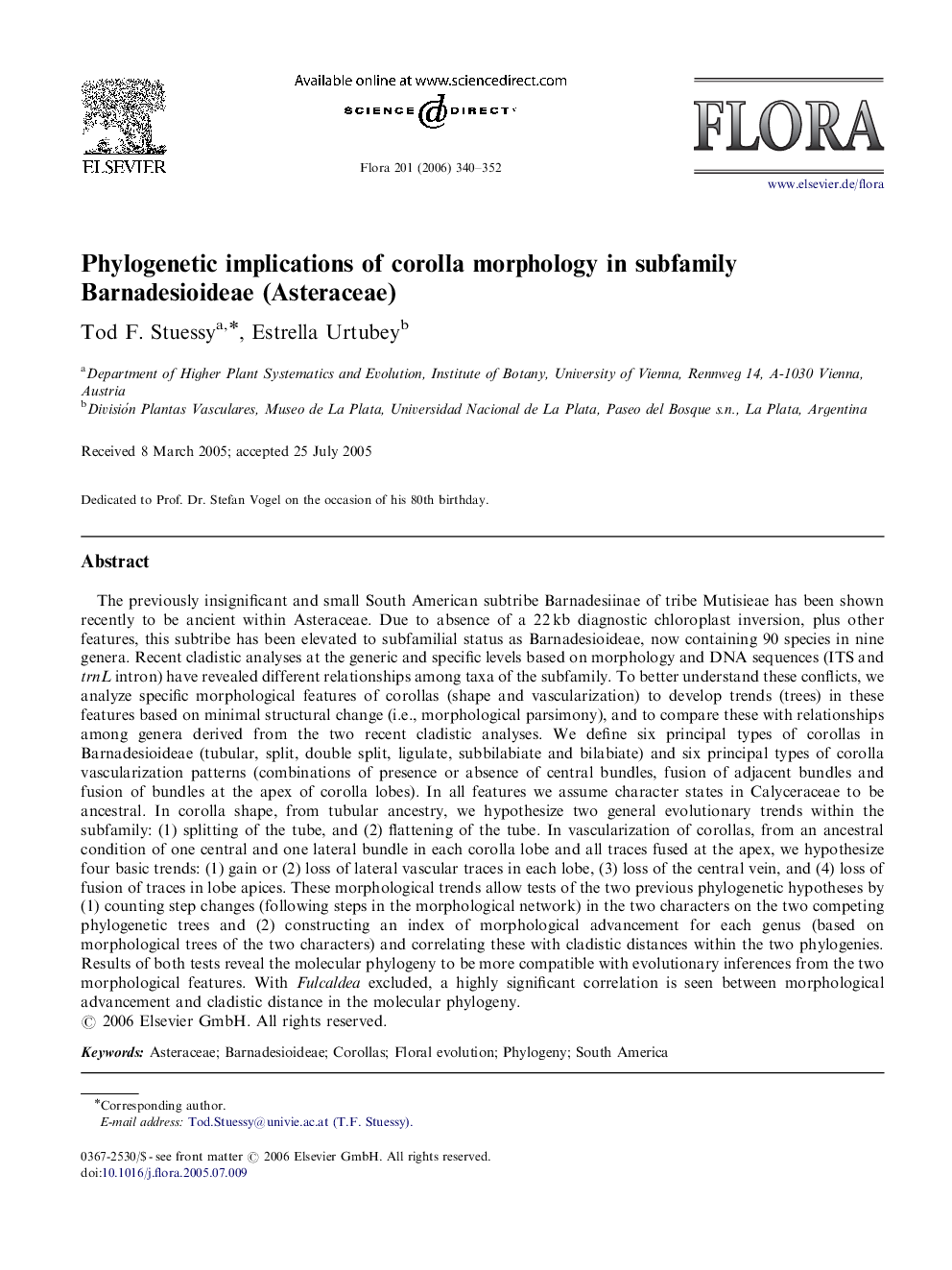| کد مقاله | کد نشریه | سال انتشار | مقاله انگلیسی | نسخه تمام متن |
|---|---|---|---|---|
| 2180275 | 1095125 | 2006 | 13 صفحه PDF | دانلود رایگان |

The previously insignificant and small South American subtribe Barnadesiinae of tribe Mutisieae has been shown recently to be ancient within Asteraceae. Due to absence of a 22 kb diagnostic chloroplast inversion, plus other features, this subtribe has been elevated to subfamilial status as Barnadesioideae, now containing 90 species in nine genera. Recent cladistic analyses at the generic and specific levels based on morphology and DNA sequences (ITS and trnL intron) have revealed different relationships among taxa of the subfamily. To better understand these conflicts, we analyze specific morphological features of corollas (shape and vascularization) to develop trends (trees) in these features based on minimal structural change (i.e., morphological parsimony), and to compare these with relationships among genera derived from the two recent cladistic analyses. We define six principal types of corollas in Barnadesioideae (tubular, split, double split, ligulate, subbilabiate and bilabiate) and six principal types of corolla vascularization patterns (combinations of presence or absence of central bundles, fusion of adjacent bundles and fusion of bundles at the apex of corolla lobes). In all features we assume character states in Calyceraceae to be ancestral. In corolla shape, from tubular ancestry, we hypothesize two general evolutionary trends within the subfamily: (1) splitting of the tube, and (2) flattening of the tube. In vascularization of corollas, from an ancestral condition of one central and one lateral bundle in each corolla lobe and all traces fused at the apex, we hypothesize four basic trends: (1) gain or (2) loss of lateral vascular traces in each lobe, (3) loss of the central vein, and (4) loss of fusion of traces in lobe apices. These morphological trends allow tests of the two previous phylogenetic hypotheses by (1) counting step changes (following steps in the morphological network) in the two characters on the two competing phylogenetic trees and (2) constructing an index of morphological advancement for each genus (based on morphological trees of the two characters) and correlating these with cladistic distances within the two phylogenies. Results of both tests reveal the molecular phylogeny to be more compatible with evolutionary inferences from the two morphological features. With Fulcaldea excluded, a highly significant correlation is seen between morphological advancement and cladistic distance in the molecular phylogeny.
Journal: Flora - Morphology, Distribution, Functional Ecology of Plants - Volume 201, Issue 5, 11 August 2006, Pages 340–352